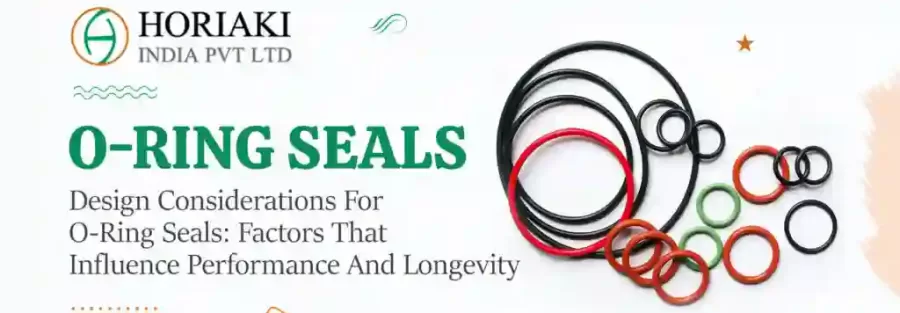In order to offer efficient sealing solutions for dynamic and static applications, O-Ring Seals are used extensively across a variety of business sectors. The construction of them is very important to both their effectiveness and their durability. This article will assist engineers and designers make educated choices for optimum sealing solutions by examining the important design variables that determine the efficacy and longevity of them.
- Material Selection
The selection of the material is of the utmost importance in order to guarantee compatibility with the environment of the application as well as the liquid or gas that is being sealed. There is a wide range of variation in the degree of chemical resistance, temperature tolerance, and mechanical qualities offered by various materials by O Ring Seals Manufacturers in India.
When choosing an O-ring material for a particular application, it is essential to take into account a variety of factors, including the operating temperature range, the pressure conditions, the presence of abrasive substances, and the possibility of being exposed to chemicals. Materials such as nitrile rubber (NBR), fluorocarbon rubber (FKM), silicone rubber (VMQ), and ethylene propylene diene monomer (EPDM) are examples of commonly used materials.
- Dimensions (Size) and Cross-Sectional Design
It must have the appropriate dimensions (size) and cross-sectional design in order to execute its sealing function effectively. To achieve adequate compression and sealing against the mating surfaces, the parameters of the O-Ring, including its inner diameter (ID), outer diameter (OD), and cross-section diameter, must be carefully specified. An O-Ring that is too tiny may not offer enough sealing, while an O-Ring Seals that is too large may be difficult to install and may suffer excessive distortion, which may result in early failure. Both of these issues may be caused by an O-Ring that is too small.
- Design of the Gland and Tolerances
The gland, which houses it must have a certain design in order to maintain the correct amount of compression and to guarantee that the seal will function properly. It is important that the gland’s dimensions, such as its groove depth, breadth, and clearance gaps, be constructed to be able to support the O-Ring’s cross-section and allow for correct compression while the gland is being assembled. It is necessary to ensure that gland tolerances are properly considered in order to avoid excessive compression or inadequate sealing force, either of which may result in leakage or Rubber Metal Gaskets failing before its time.
- Surface Roughness and Surface Finish
The surface roughness and surface finish of the sealing surfaces that come into contact with the O-ring may have a considerable impact on the O-ring’s performance and durability. Surface flaws such as scratches, nicks, or corrosion may put a seal’s integrity at risk and raise the likelihood that it will leak. It is essential to take the necessary precautions to ensure that the sealing surfaces are flawless, devoid of any imperfections, and have an acceptable finish that is compatible with the O-Ring material.
- Compression and Squeezing
Accomplishing an efficient sealing job using O-Ring requires paying close attention to both the compression and the squeezing steps. In order to produce an efficient seal between the mating surfaces, the O-ring must first be compressed to the appropriate level. Insufficient compression may lead to gaps and leakage, while excessive compression can create excessive stress on the O-ring, which can result in either deformation or extrusion. The suggested values for compression and squeeze depend on the O-Ring material and size, and they should be adhered to in accordance with the norms and recommendations established by the industry.
Conclusion
To arrive at O-Ring that have optimum performance and a long lifespan involves careful consideration of a number of different elements throughout the design process. Material selection, right size and cross-sectional design, adequate gland dimensions and tolerances, surface quality, compression, and dynamic considerations are all important factors to take into account when deciding the sealing efficacy and durability.
Engineers and designers may assure dependable and long-lasting O-ring solutions for a broad variety of applications by paying attention to certain design aspects. This contributes to better performance and decreased downtime.
Being one of the trusted O Ring Seals Suppliers In India, Horiaki India Private Limited products are guaranteed to seal reliably sealed almost 1,800 different chemicals based on material selection.

Horiaki India Private Limited
Horiaki India Private Limited was established in the year 1998 with an aim to manufacture and supply premium rubber bonded products in India as well as the international market.

